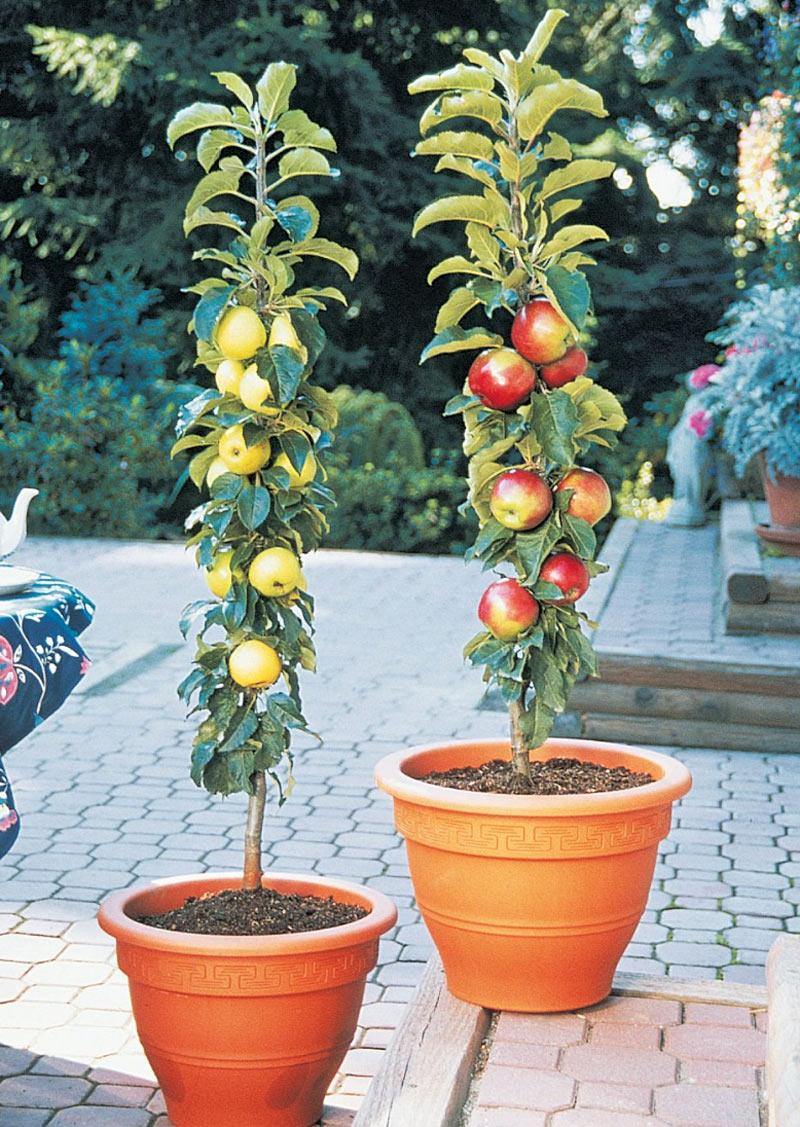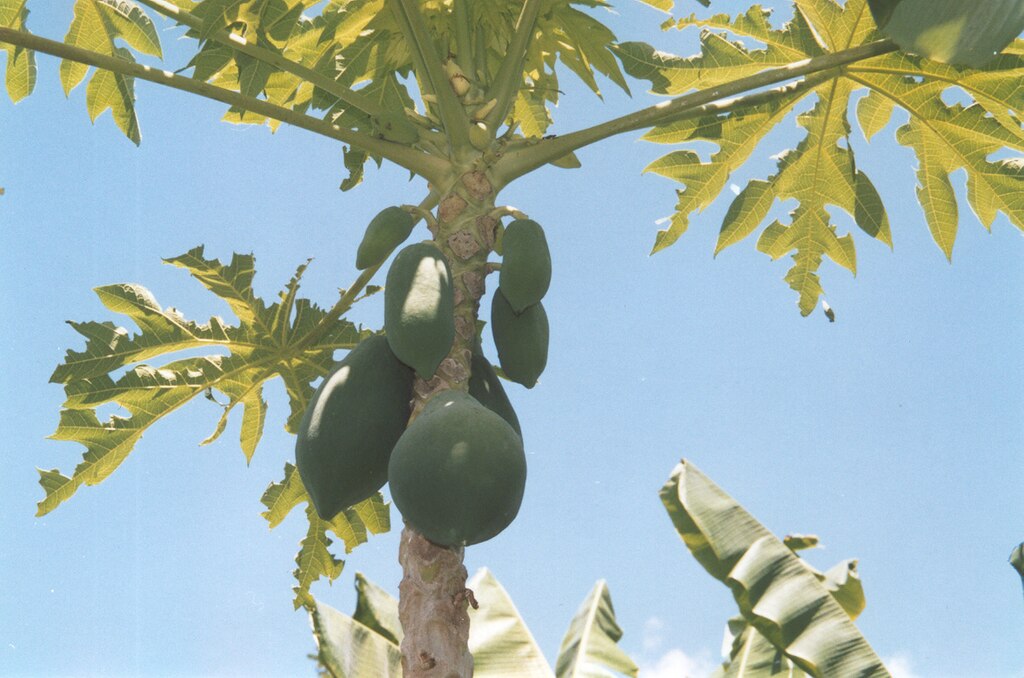 |
| [Image Source] |
Columnar apple trees are perfect for those who want to grow apple trees but don't have the outdoor space for it. They don't grow branches, and, as you can see from the picture, the fruit grows closely to the trunk of the tree.
You cannot grow these apple trees from seed because most modern fruit trees are the product of grafting: the upper part (scion) of one apple tree is grafted into the lower stem (rootstock) of a different tree. The final product, called a bare root tree or rootstock, can be purchased from nurseries, or you can order one online. Each rootstock is given a code that consists of a letter (indicating origin) and a number (assigned sequentially). Apple trees that have codes of P-22, M-27, M-9, and M-26 will grow to be eight feet or shorter.
Plant the bare root in a 10-15-gallon pot. Water it thoroughly. Because the bare root is dormant at this point, don't water it again for awhile-- just keep the soil slightly moist until it breaks dormancy.
After your tree begins to grow, you can begin to water it regularly. If your tree gets too tall, cut it back to half its size. The trunk will start new growth and soon produce fruit.
Because apple trees require cross-pollination, you will need to grow at least two varieties.
Apple trees become dormant in the winter and need to rest in temperatures between 32 and 45 degrees Fahrenheit. The root system of the tree is hardy to 15 degrees; if the outdoor temperature drops below that, you'll need to move it inside for awhile.
Some good varieties to grow include Scarlet Sentinel, Golden Sentinel, and North Pole. The Sentinel varieties are disease-resistant, and the North Pole variety is similar to a Macintosh.
Happy growing!

_6.jpg)
_bush.jpg)







